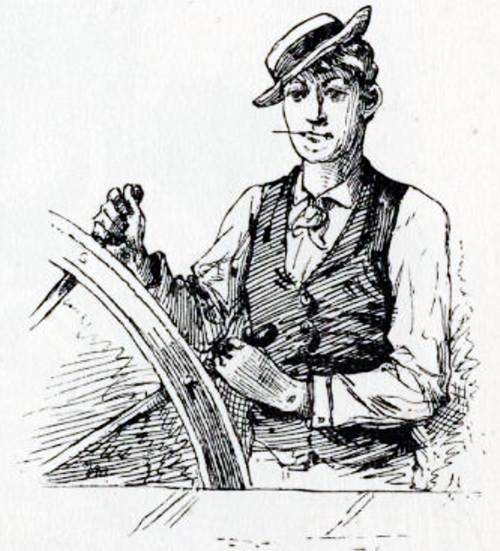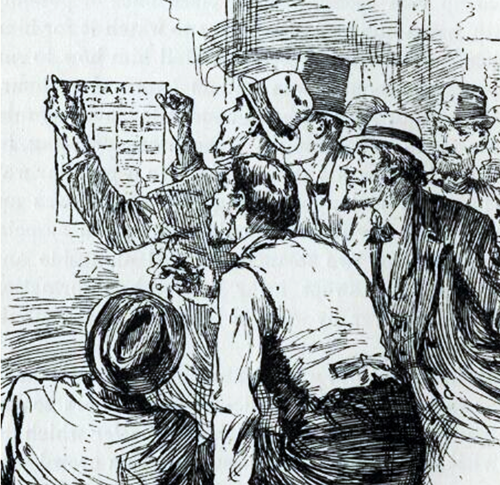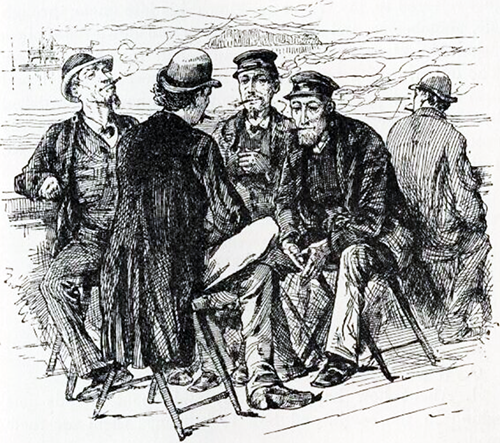Learning to operate the Mississippi River
Bill Nuttle ·Re-engineering the Mississippi River presents political as well as technical challenges.
Advances in technology since the beginning of the industrial revolution have transformed both transportation along the Mississippi River and the river itself. The invention of the paddlewheel steamboat in the early 1800s offered a radical advance over previous, more primitive modes of river transportation. By the 1830s, steamboats regularly moved people and goods along the Mississippi and its tributaries. This fueled the growth of industrial cities in the Midwest and the expansion of the US into territories west of the Mississippi River. At first, steamboats navigated a river that was wild and largely uncharted. Engineers improved conditions by removing snags and debris that posed hazards to navigation. They continued by straightening the river and stabilized eroding banks. Today, the lower Mississippi River can fairly be regarded as an enormous machine - every mile is engineered for a purpose.
What are the implications of this shift in our relationship with the Mississippi from “man versus nature” to “men and machine”? In “Life on the Mississippi,” Mark Twain writes about his career as a steamboat pilot during the mid-1800s. Steamboat transportation reached a peak by mid-century, and then declined with increasing competition from railroads. Pilots had the critical responsibility of guiding steamboats along constantly shifting channels and safely past unseen hazards. The work of the pilots changed over time, as the engineers improved the river. Mark Twain’s experiences as an apprentice and a pilot and the changes he witnessed in the river offer insight into what it means to drive the river. Ultimately, the transformation of the Mississippi River transforms the lives of everyone connected with it.

The job of the steamboat pilot was as glamorous as it was essential, but it required rigorous training. The pilot stood his watch perched high atop the boat with unobstructed views all round. It was his sole responsibility to steer a steamboat up or down the river, taking into account changes in the channel, the location of hazards, and the effects of the wind and current. To do this, the pilot was trained to read conditions bases on what he could see from the pilothouse and he had an encyclopedic knowledge of the river that he had committed to memory. The pilots turned the wheel to steer and signalled commands to the engine room for changes in speed or direction, forward or reverse. His control over the movement of the boat was absolute. Accordingly, steamboat pilots were treated with deference and respect.
By comparison, the work of the engineers who operate the Mississippi River today is all but invisible. Responsibility for building, repairing and operating facilities along the Mississippi River lies with the Corps of Engineers, a behemoth government agency. Its actions are taken by committees of engineers, meeting out of sight of the river, often as not in a windowless room. Instead, they study the river in virtual form. The engineers rely on reams and reams of data, taking measure of the river via water levels, currents, chemistry and biology, and the hydrologic and hydraulic forces acting on the river. These data are compiled into digital data bases, analyzed by computer models, and finally codified in to a master manual. The master manual is the accumulated knowledge of the committee. It is, in essence, the instruction manual for operating the river. To drive the river, the engineers consult the manual.

Granted, the deliberations of a committee lack the romantic appeal of the lone pilot relying on only his wits and split-second decision-making. However, the Corps of Engineers has succeeded in taming the Mississippi River and bringing it under control. This is a feat that most people would have considered impossible during Mark Twain’s days on the river, if had they been able to conceive of the possibility at all. Proof of this came in 2011 with a flood that set records for river stage along the Lower Mississippi River. The system of protective levees, emergency floodways, and coordination with storage reservoirs upstream prevented tragedies of the 1927 flood, which was similar in magnitude. In 1927, the river broke through levees that had been hastily constructed, inundating an area the size of Connecticut and killing uncounted thousands of people. The levees held in the 2011 flood, and no lives were lost.
Why, then, is the Corps of Engineers regarded with suspicion and outright hostility along the Missouri River? A lack of romantic appeal fails to explain all of it. Along the Missouri River, engineers control the largest system of dams and reservoirs in the US, which was completed in 1966. Since that time, the Corps has been under almost constant siege, from the states in the basin and other interests, over the question of what the water captured by the reservoirs should be used for. Is it for irrigation, or for the generation of hydroelectricity, or for maintaining water levels for navigation downstream, or for recreation? The engineers can’t give a clear answer about what should be done because the reservoirs were built to be able to do each of these things and more, but perhaps not all of them together.

As it turns out, there is more to operating a steamboat, or managing a river, than simply driving. The pilot may have absolute authority in matters of steering the boat, but the captain rules on all other aspects of running the steamboat. As Mark Twain might have put it, a citizen booking passage on a steamboat can claim sovereign authority over themselves and their belongings while on shore, but a soon as they come aboard they are under the authority of the boat’s captain. The captain sets the schedule, hires the crew, orders provisions, overseas loading and unloading, and he resolves disputes with passengers. It would be an unhappy boat if, without a captain, the pilot was required to negotiate directly with the passengers about where the boat would stop next.
In this respect, managing the Missouri River is like driving a boat without a captain. Under the US Constitution, each state has sovereign authority over its water resources, even the rivers shared with adjacent states. In the 19th century, engineers recognized that the Mississippi River, as a machine, must be treated as a single entity, and authority divided among the states would only lead to trouble. Therefore, the Mississippi River Commission was established in 1879 as the overall authority and arbitrator for operations on the river below Cairo. The commission acts as the de facto captain of the river, setting the course for engineers to follow. Similar overarching authorities have been established for every major tributary of the Mississippi, except the Missouri River.

The transformation of the Mississippi River continues. People now recognize that all the rivers in the Mississippi River watershed should be treated as a single entity. The motivation is to secure the benefits of lower flood risks, reliable navigation, hydroelectric power, and securing water needed for various purposes - including for recreation and for the restoration of natural ecosystems. From the experience of operating the paddlewheel steamboat on the river system, one of the earliest examples of modern technology, we recognize that there are two main challenges to overcome. First, there is the technical challenge of how to operate the combined river system, which will resemble a huge, continent-spanning machine. And second, there is the political challenge of how to obtain the cooperation of separate, sovereign interests for the benefit of all. Mark Twain called the Mississippi River the “body of the nation.” That is the scope of this project.

